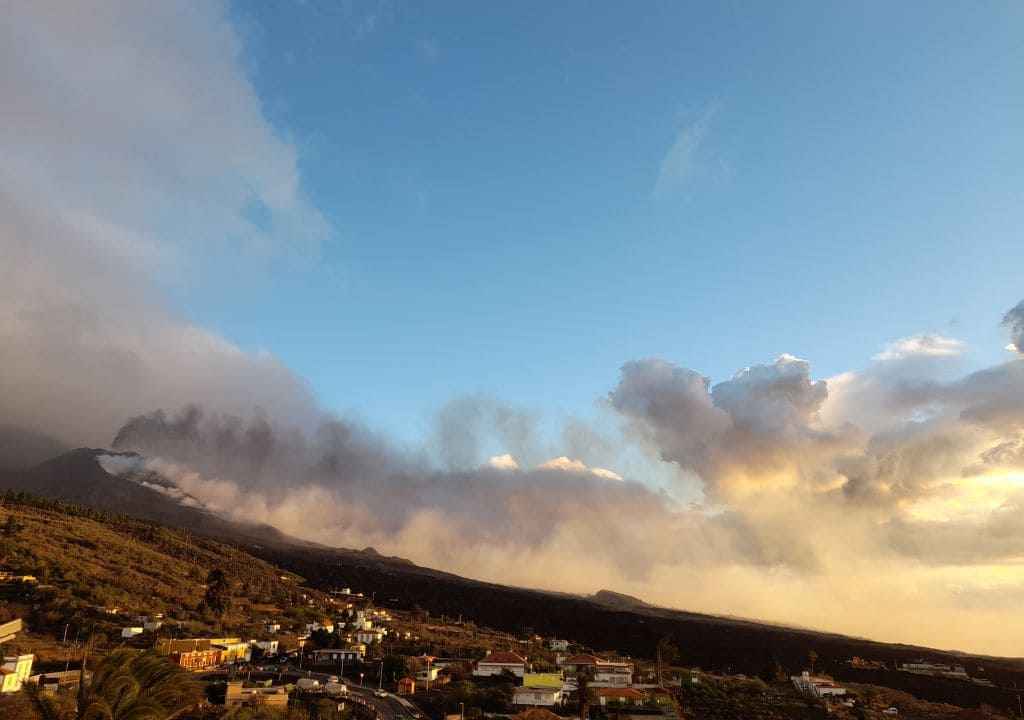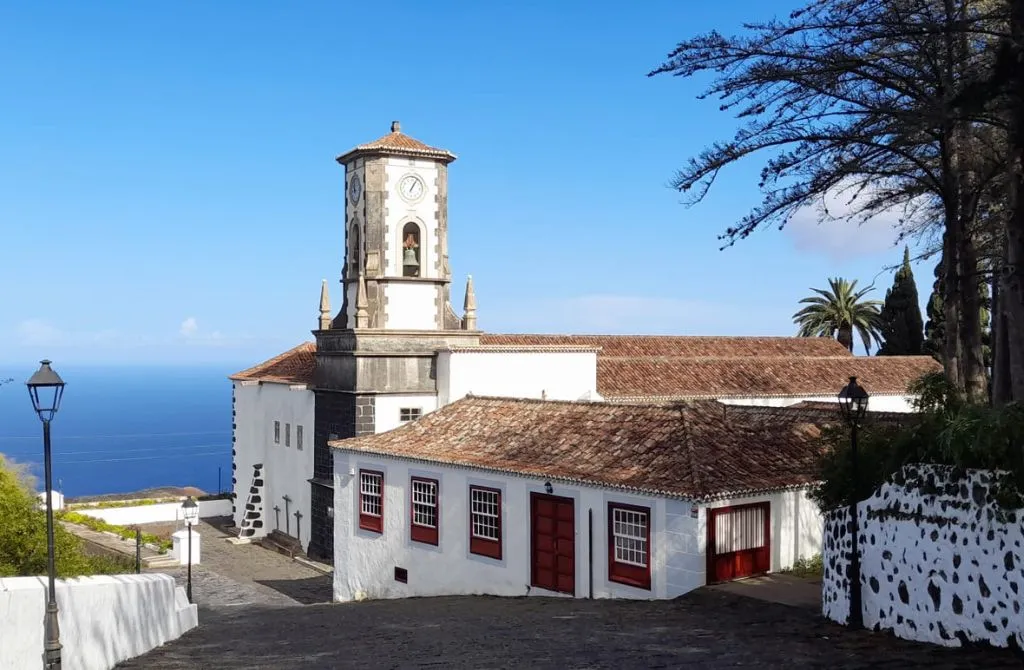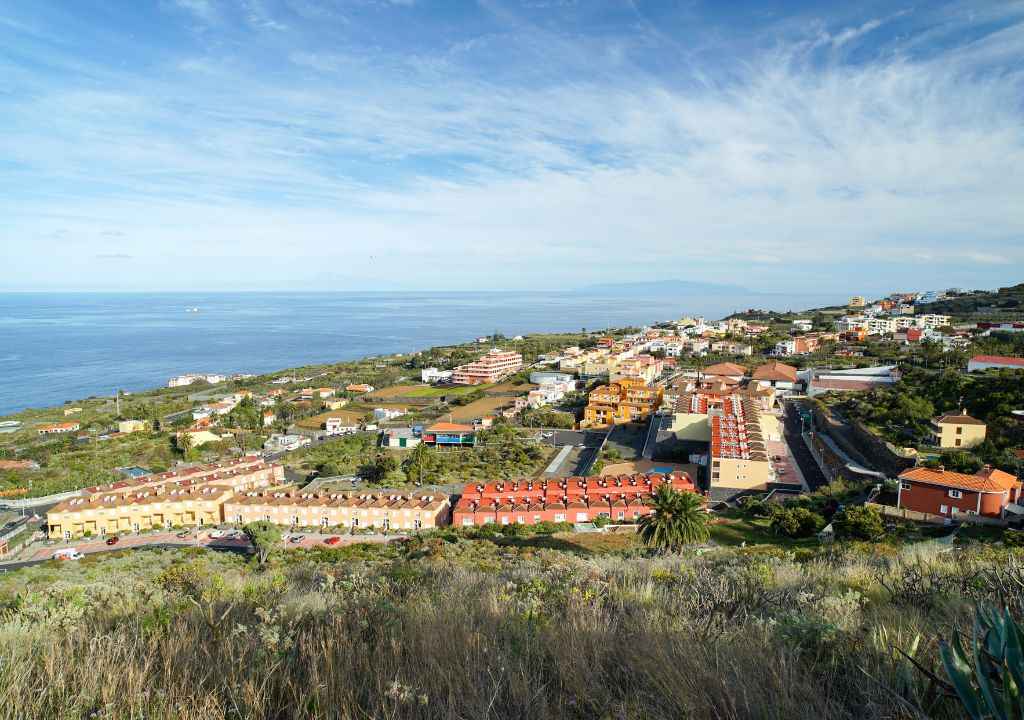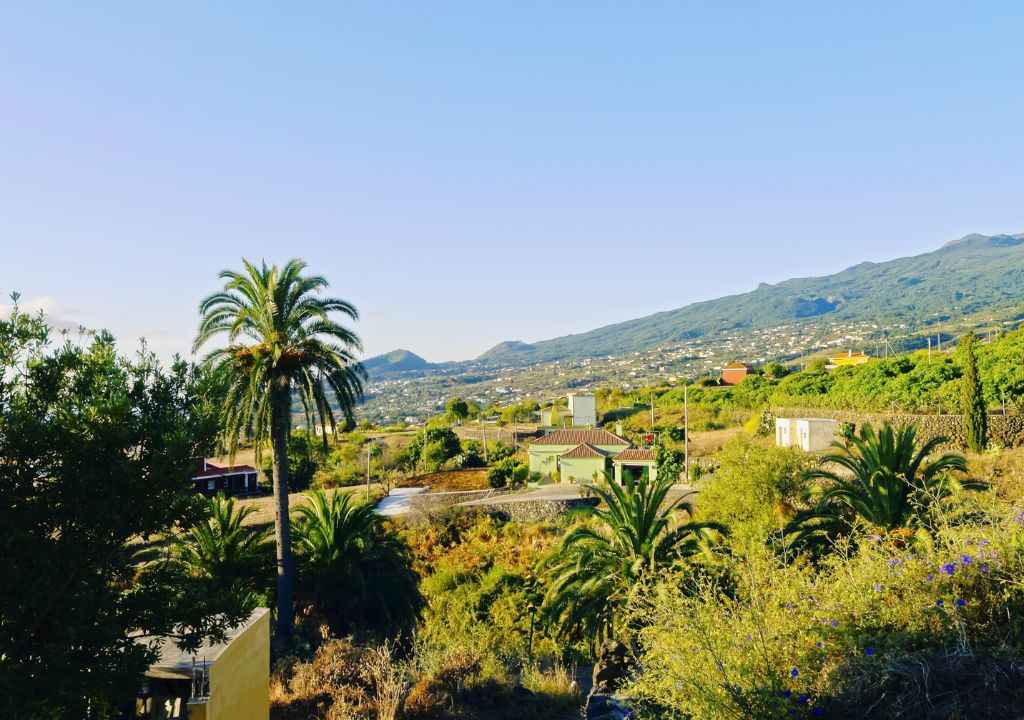Welcome to Santa Cruz de La Palma, the capital of La Palma island! Boasting a population of around 15,000, this charming city is the island’s second-largest, after Los Llanos de Aridane. Radiating a romantic and serene ambiance, Santa Cruz de La Palma holds the distinction of being designated as a Cultural Heritage site in the category of Historical-Artistic Ensemble.

Santa Cruz de La Palma: Dive into the most enchanting historic and artistic charm of La Palma island
Located on the eastern side of La Palma, Santa Cruz is nestled within a bay shielded from winds and houses the island’s main commercial port. The city enjoys a gentle climate throughout the year. However, its skies frequently remain overcast, influenced by the trade winds from the Atlantic Ocean.
This thriving city owes its prosperous economy to its pivotal role in trade, serving as a primary channel for the inflow and outflow of import and export products. From the city’s southern end, the airport is conveniently accessible via a highway. The commercial area, marked by two streets parallel to the shoreline, starts at the port’s edge.
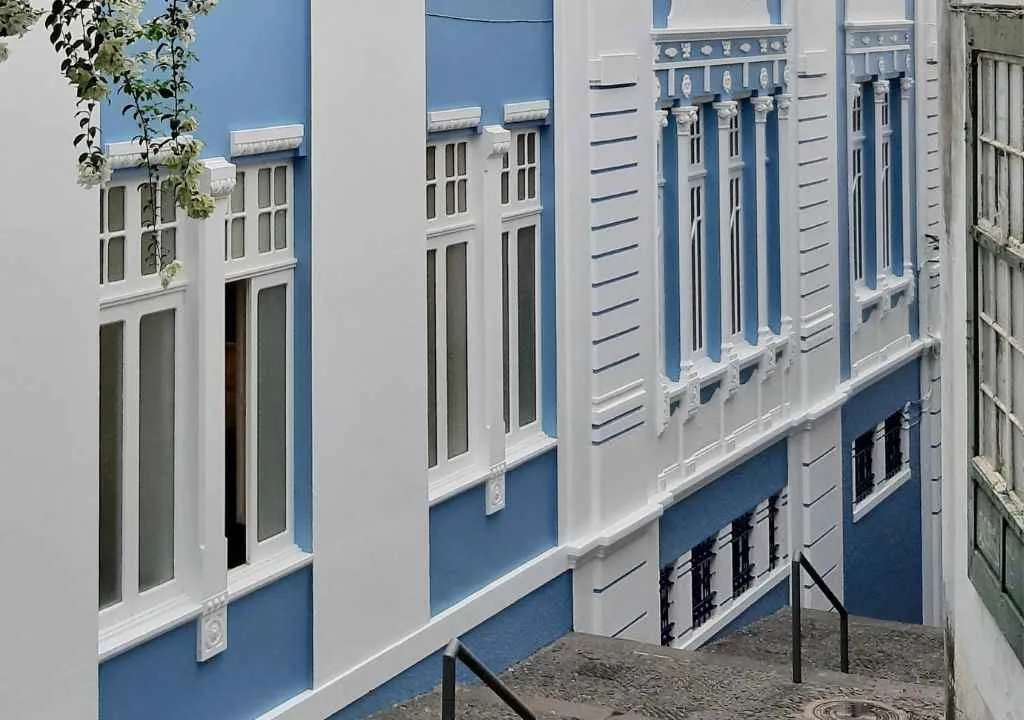
What to See in Santa Cruz de La Palma
Santa Cruz de La Palma is known for its rich artistic and architectural heritage in Renaissance, Baroque, and Neoclassical styles. This charming city, with a long maritime tradition, whispers tales of corsairs, conquerors, and great transoceanic adventures. During your visit to the capital, you must not miss:
1. HISTORIC CENTRE OF SANTA CRUZ DE LA PALMA
- The Complex: Plaza de España, Town Hall, and Church of San Salvador. Undoubtedly the heart of Santa Cruz de La Palma, this is one of the finest Renaissance complexes in the Canary Islands. The impressive church, with its arabesque-style wooden ceiling, and the picturesque square serve as the nerve center for cultural events, concerts, and various activities. The church takes on a particularly important role during Holy Week and the Lustral Festivities of the Descent of the Virgin, where it becomes the focal point of religious celebrations and processions.
- Main Street: O’Daly Street and Anselmo Pérez Brito Street. These streets form the main thoroughfare (Calle Real), reflecting the city’s historical connection as a departure and return point for ships sailing to America. With its colonial style, colorful facades, charming squares, and inviting alleys, along with delightful shops, bars, and restaurants, Santa Cruz de La Palma captivates its visitors.
- Casa Salazar. Located at 22 O’Daly Street, the Salazar Palace is a fine example of noble architecture with a beautiful central courtyard. Today, it hosts congresses and traveling exhibitions.
- Placeta de Borrero. A charming corner with outdoor cafes and restaurants, ideal for relaxing and enjoying the local atmosphere. The architectural variety and hanging plants from the balconies make this square one of the most charming spots in the city.
- Plaza de Vandale. After a fire destroyed the Brier house in 1948, the city council created this square with the central artwork “Los Divinos,” honoring the Christmas groups that sing through the streets in the early mornings before Christmas Day.
- Neighborhoods: La Luz, San Telmo, and San Sebastián. These charming neighborhoods feature beautiful colonial houses and cobblestone streets, showcasing the city’s historical legacy. Walk through their steep streets to the Dornajo square, where you can appreciate Canarian architecture.
- Temple of San Francisco. The former Dominican convent, now the Island Museum, showcases historical artifacts and exhibits.
- Castillo de Santa Catalina. The remains of the old defensive system of Santa Cruz de La Palma.
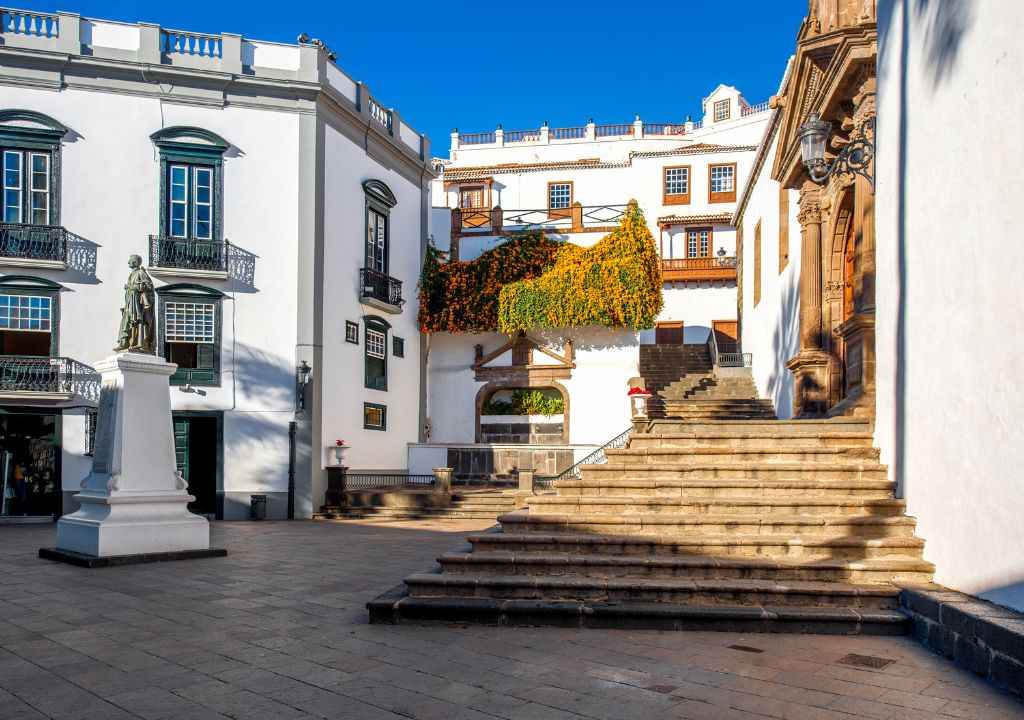
2. BALCONIES OF SANTA CRUZ DE LA PALMA
The wooden balconies on Avenida Maritima are the best-preserved overhanging structures in the Canary Islands. Their uniqueness lies in the variety of balcony styles found in such a small area, especially the number and quality of the so-called double balconies.
The design of these ajimez balconies, which have an Arab origin and are box-shaped, was adapted as a cooling solution for hot days. This was particularly useful on the seaside where the owners could enjoy the cool trade winds blowing from the north. Although these balconies are now famous for their beauty, they were originally considered secondary parts of the houses.
Many of these balconies have a covering panel at the ends where toilets were located, allowing waste to flow directly into the Atlantic.
Today, the balconies in La Palma are well-maintained and decorated with flowers and plants to enhance their visual appeal.
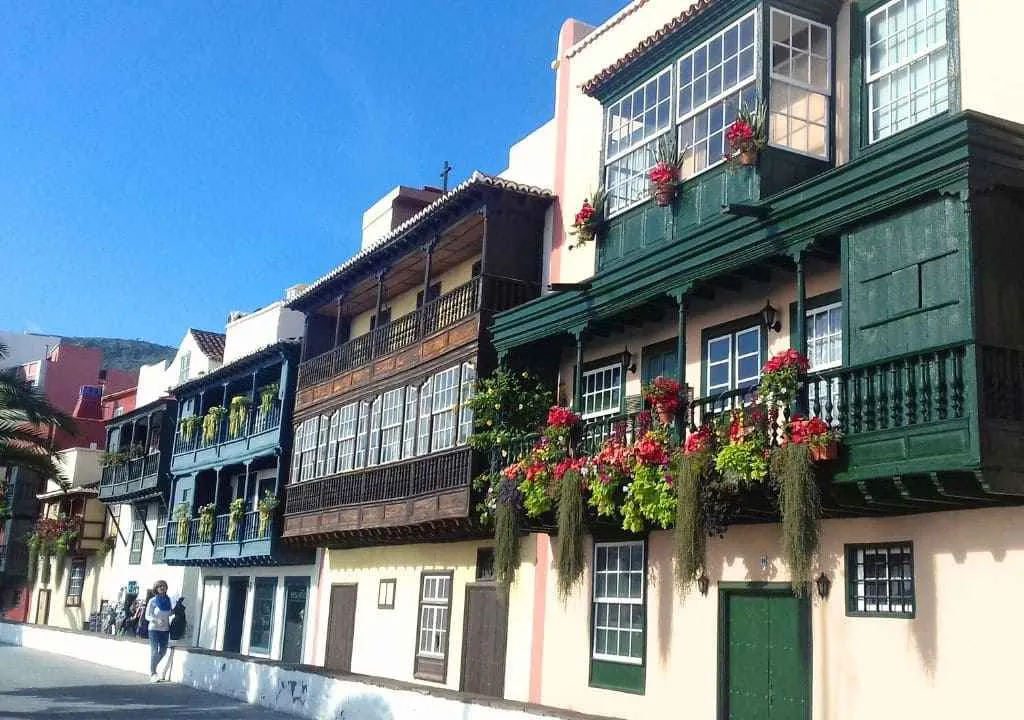
3. SHIP OF THE VIRGIN
A naval museum in the picturesque Plaza de La Alameda, the Barco de la Virgen pays homage to the island’s maritime tradition. Constructed in the image of Christopher Columbus’s renowned Santa Maria, it houses a plethora of artifacts and information about the island’s naval history and the Virgin of Las Nieves celebrations.
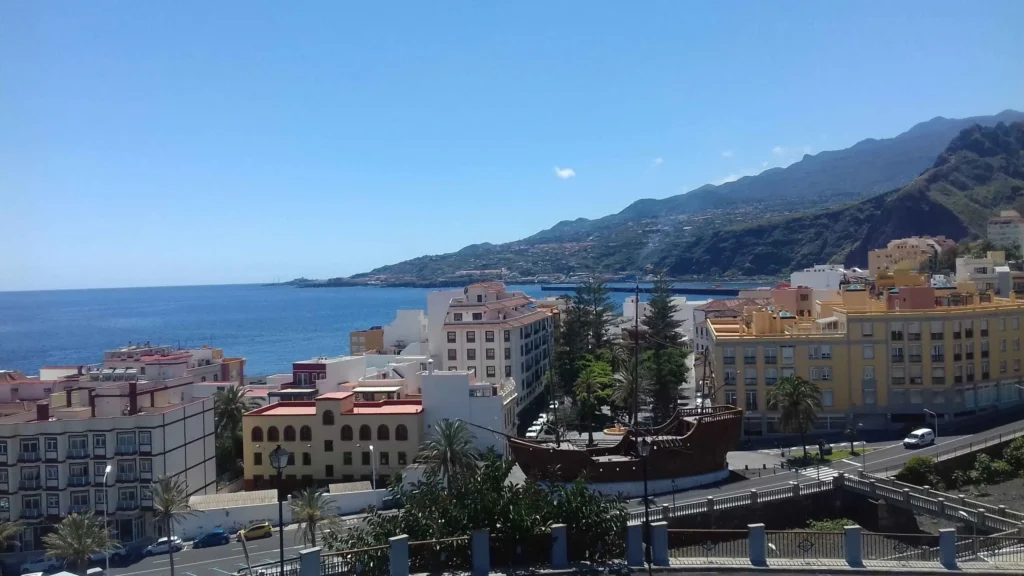
4. NEIGHBORHOODS OF SAN TELMO, SAN SEBASTIAN AND LA LUZ
These charming neighborhoods are easily accessible via the glass elevator located next to the post office building, near the bus station. They feature beautiful colonial houses and cobblestone streets, showcasing the city’s historical legacy. Walk through their steep slopes to Dornajo Square, where you can appreciate the typical Canarian architecture.
5. ROYAL SANCTUARY OF OUR LADY OF THE SNOWS
This sanctuary is dedicated to the patron saint of La Palma island, whose festivity is celebrated every 5th of August. The Marian image of the Virgen de Las Nieves, enthroned behind the main altar, holds the distinction of being the oldest in the Canaries and the second-oldest devotion in the archipelago, only preceded by the Virgen de Candelaria (patron saint of the Canaries) in Tenerife.
It is worth noting that this sanctuary is located in a neighborhood far from the historic center, about 8 minutes by car. Therefore, we recommend visiting it by car or taking a taxi.
Set amidst a beautifully serene natural environment, the sanctuary adopts the architectural style of the Palmeras hermitages. The main chapel stands tall, featuring a half-barrel vault separated by a toral arch. The oldest preserved document bearing the name “Santa María de las Nieves” dates back to January 23, 1507.
The statue of the Virgin, hailing from the period of the first evangelizers post the island’s conquest in 1493, is a terracotta, polychrome sculpture transitioning from the late Romanesque to Gothic style. Adorned with luxurious fabrics and embellished with numerous jewels, it measures 82 cm in height.
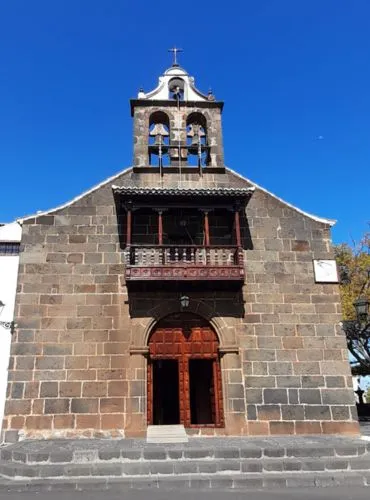
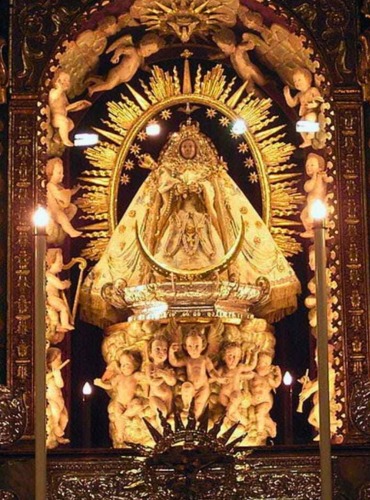
Descent of the Virgin
The unmissable star event of La Palma. The sanctuary serves as one of the primary venues for the Lustrales Festivities of Santa Cruz de La Palma, a Festival of National Tourist Interest. Every 5 years since 1680, a procession sees the transfer of the Virgen de Las Nieves’ image from its hillside sanctuary to the city. This tradition started as a plea from the parishioners for the Virgin to intervene during times of misfortune on the island. Known as the Fiesta de la Bajada, this celebration draws tourists and devotees over a month, filling the city streets with diverse sacred and secular festivities, culminating on the day the Virgin is paraded through the city.
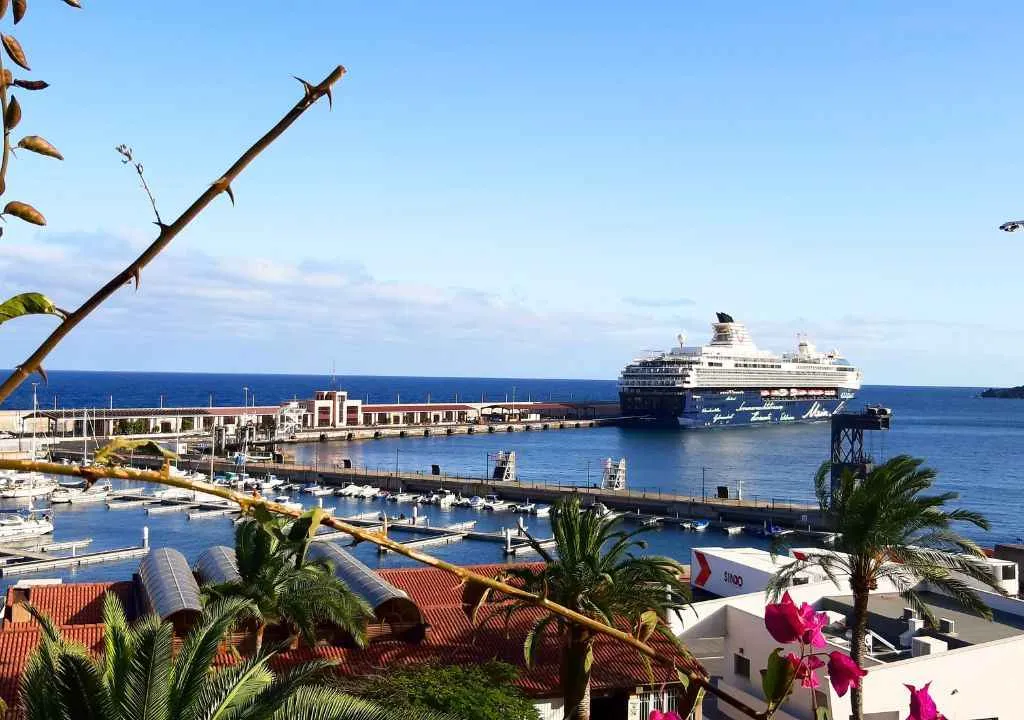
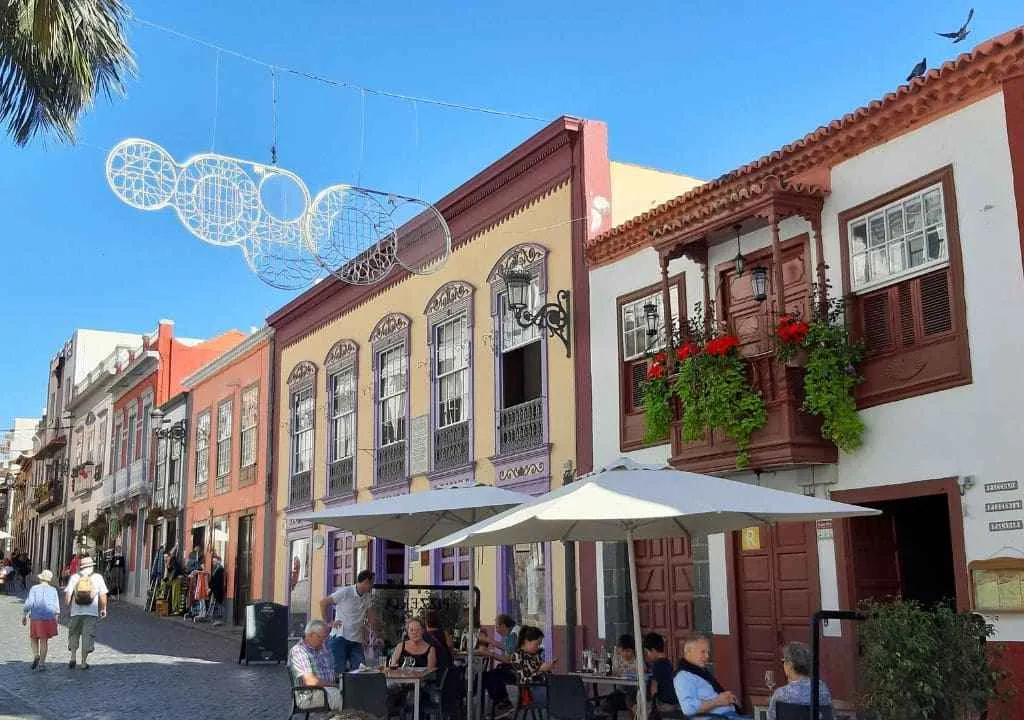
6. SANTA CRUZ DE LA PALMA BEACH
A peaceful urban beach located at the heart of the island’s capital. Encircled by the city’s vibrant and historic architecture, this volcanic black sand beach offers a laid-back and familial setting, perfect for a sun-soaked day by the sea.
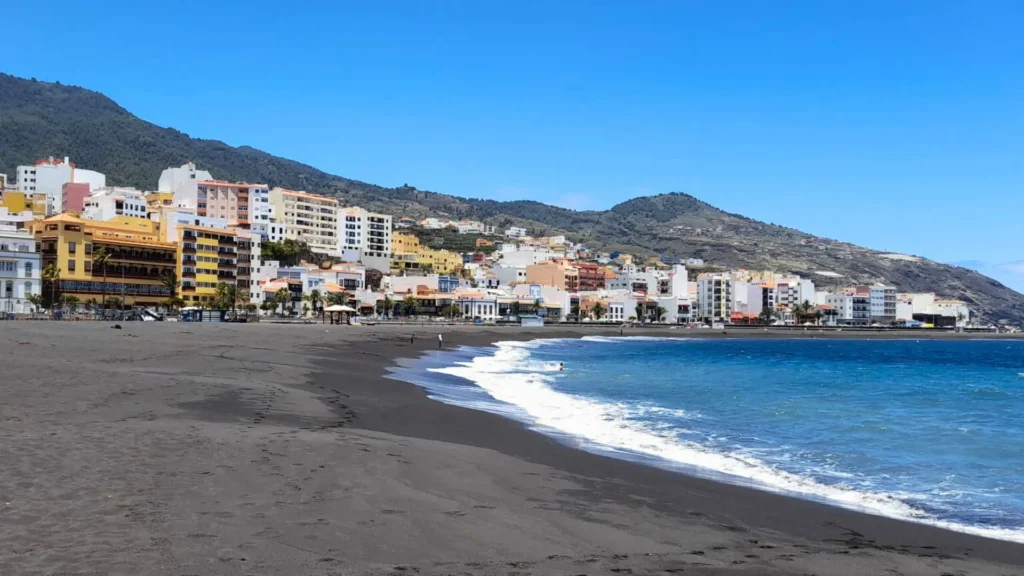
7. SANTA CRUZ DE LA PALMA MARKET “LA RECOVA”
The traditional market of Santa Cruz offers fresh local products, such as fruits, vegetables, and crafts. Don’t forget to try the famous freshly squeezed sugarcane juice (Guarapo de Caña).
8. GIANT SANTA CRUZ SIGN
At the southern entrance of the city, near the port, there is a large sign, perfect for taking souvenir photos. The background of the sign changes according to the different seasons of the year.
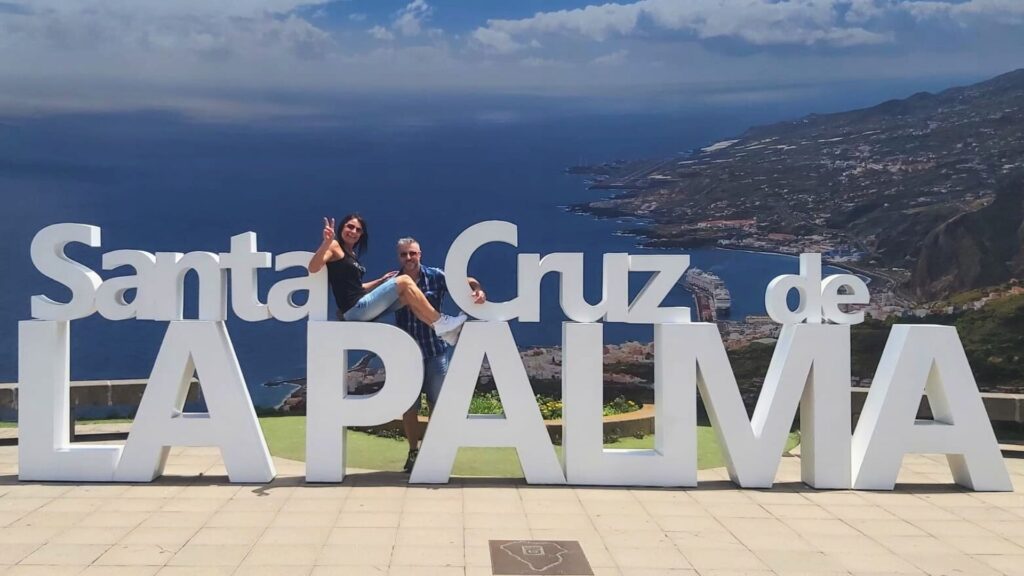
9. MOSAIC NITRATO DE CHILE
At the beginning of O’Daly Street, you will find an example of the iconic Nitrato de Chile advertisement, a masterpiece of Art Deco design created around 1929 by Adolfo López-Durán Lozano, who was then a young architecture student.
This poster advertised a fertilizer made of sodium nitrate, a resource abundant in Chile. The export of this product to Europe quickly gave Chile a dominant position in the fertilizer market.
Manufactured in ceramic, the poster is strategically located at the beginning of the most important commercial street in Santa Cruz de La Palma, where it was visible to transporters, farmers, businessmen, and passersby traveling from the south to the city center.
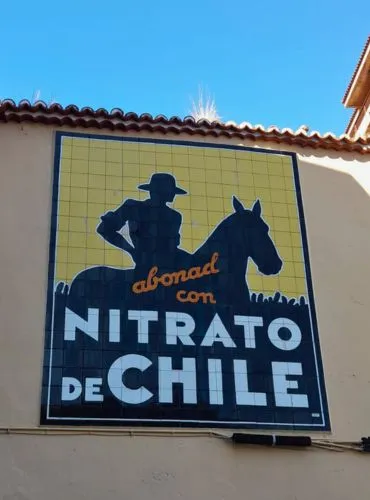
Today, this vintage advertisement can be found on T-shirts, and souvenir items. Similar to the capital of La Palma, examples of this advertisement can still be seen in other Spanish cities, especially in Extremadura, Andalusia, and La Rioja, regions where agriculture has played a significant role in the economy.
Recommendations for Santa Cruz de La Palma
- The old town is the perfect place to shop for the most typical and original souvenirs as for exmple lava jewerly, allowing you to take a piece of the island home. Remember that most shops usually take a break between morning and afternoon and close on Saturday afternoons and all day Sunday.
- The historic center of Santa Cruz de La Palma is small, so it can be explored in a full day. It is ideal to take your time, enjoy a meal or a snack on one of the terraces in the historic center, or savor a delicious dish in one of the city’s restaurants.

Souvenirs from La Palma
Discover unique souvenirs from La Palma: handcrafted products, local wines, and traditional sweets. Each piece tells a story of island culture and is the perfect keepsake from your adventure.
History of Santa Cruz de La Palma
Santa Cruz de La Palma was established on May 3, 1493, under the name Villa de Apurón by Francisco Fernández Lugo.
The city’s port, the last on the route to America, allowed for the rapid growth of the city, exporting the sugar cane produced on the island. In 1553, the city was destroyed by the pirate François Le Clerc, also known as Pata de Palo, leading to its reconstruction and fortification.
In 1558, Philip II established the first Court of the Indies in Santa Cruz. As a result, all Spanish ships traveling to the American colonies had to register at this court. Moreover, the city has the honor of having the first democratically elected town hall in Spain, originally located in the Cueva de Carías, in the north of the city.
In 1773, the city also celebrated the first popular elections in all of Spain after a lawsuit against the city’s perpetual councilors, led by the merchant of Irish origin Dionisio O’Daly and Anselmo Pérez de Brito. They obtained a favorable resolution from the Crown of Castile.
This city has a fascinating history, marked by its significance in trade and politics during the colonial era. Come and explore this city full of rich history and culture. Take the opportunity to visit the historic center of the city through a guided free tour.

The Weather in Santa Cruz de La Palma Today
Santa Cruz de La Palma Map
How to get to Santa Cruz de La Palma
BY CAR
Santa Cruz is located in the center of the east side of the beautiful island. You can get there from the north via the main Lp1 road, from the south via the Lp2, and from the west via the Lp3 road.
It lacks public parking, however, the most well-known free parking spots in Santa Cruz de la Palma are located in the southern area next to the roundabout at the city entrance, next to the Port and in the northern area on Avenida de Las Nieves. In the summer, a few parking spaces are also made available in the Barranco de las Nieves.
To ensure a parking spot, you have the option to pay by leaving your car in the large parking lot on Avenida del Puente.
BY BUS
You can reach the city from almost any point on the island. Check here how to get around La Palma.
BY PLANE
The island’s only airport is located in the municipality of Villa de Mazo, just 8 km from Santa Cruz. Every day, flights arrive from various cities on the mainland and Europe, connecting Santa Cruz and the island of La Palma with the rest of the world. Additionally, La Palma is well connected to the islands of Tenerife and Gran Canaria, from where dozens of flights arrive and depart daily. Once you land at La Palma airport, you can take a taxi or bus number 500, which runs hourly, to get to your final destination. Both the taxi and the bus will get you to Santa Cruz de La Palma in no time.


